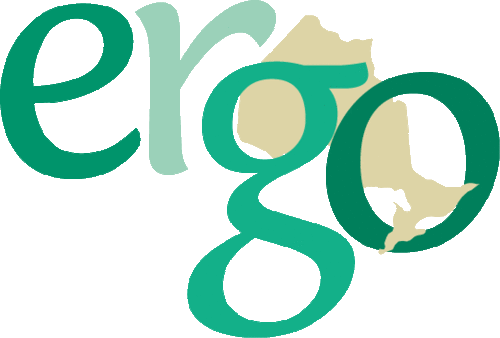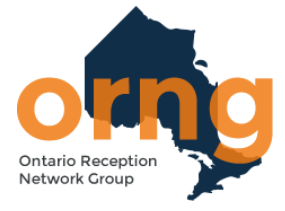
We collect basic website visitor information on this website and store it in cookies. We also utilize Google Analytics to track page view information to assist us in improving our website.

By Sky Cressman & Michelle Lang (Waterloo Region DSB)
Abdallah, a student in Sky Cressman’s 2018-2019 MAT1LZ class
(Sky Cressman -secondary Math teacher)
I am fortunate to teach at a high school in Waterloo Region rich with diversity. The student body is made up of students from many different backgrounds and cultures, who naturally bring a range of varied first languages. We welcome and celebrate these differences at Eastwood Secondary School. And along with these differences, come very unique student learning needs. It is these needs that have given rise to a terrific literacy program aimed at early literacy development for our English language learners.
Prior to 2017, however, our English Literacy Development (ELD) numeracy program hadn’t yet received the same attention. This was evident in the general lack of necessary resources (concrete math materials, adequate classrooms), as well as inconsistent teacher timetabling. Further, beyond the logistical aspects, the content and pedagogy that were shaping our program were simply unsuitable for our ELD population. We were using the essential-level, grade 9 Ontario math curriculum, even though ELD students have minimal to no formal instruction prior to their arrival. Sure, there was some focus on vocabulary and content-specific language, but the math curriculum itself was addressing content 6 to 8 grade levels beyond the students' understanding. The attempt to deliver this unsuitable curriculum meant that my teaching methodology focussed very much on procedures and algorithmic processes, rather than on foundational understanding. It became clear that students were following my processes but had very little understanding of the math concepts lying beneath. Our numeracy program at this time was failing these kids. We were sending them off without the fundamental math skills necessary for life beyond high school, never mind skills to continue on to higher education. This quickly became an equity issue for me. With the program as it stood, our ELD population did not have access to effective numeracy education that would allow them to further their knowledge and skills toward proficiency.
(Michelle - Math Learning Service Consultant)
In Waterloo Region District School Board (WRDSB) alone, we have approximately 350 secondary English language learners (ELLs) in the English Literacy Development (ELD) program. Although limited in their prior schooling and first language (L1) literacy, these students come to us with a wide variety of background experiences and learning strengths. In their first few years of high school, they will begin to develop English literacy skills in five language courses provided by the Ontario Ministry of Education: ELDA through ELDE1. However, despite a policy that states explicitly that students in ELD programs should receive “additional support...through an intensive program designed to accelerate the student’s acquisition of proficiency in everyday and academic English and the appropriate knowledge and skills of literacy and numeracy (p. 18, emphasis added)”, we have no Ministry-approved courses to specifically address the numeracy learning needs of our students in these programs.
In 2017, the number of students enrolled in ELD math courses reached a critical mass and additional board resources were allocated to address the concerns that many of us were expressing. We made plans to gather data focused on the mathematical understandings our students were coming to us with. Through observations and conversations with students and teachers in the ELD math classrooms, we identified some student learning strengths and needs. Then, using PRIME Number and Operations Diagnostic Tools3, we completed 66 one-on-one interviews with students. This assessment data suggested that most students were within late phase 1 or early phase 2 on the PRIME Number and Operations continua, which is equivalent to about grade 1-2 in the Ontario curriculum. It was time for changes to both the content that teachers were teaching and the methods that they were using to address that content.
(Sky)
By the 2017-2018 school year, we were lucky to have at Eastwood a very unique literacy program well underway for our ELD population. The focus was on small group instruction - guided reading and writing. Although a very different subject area, to observe such a program gave our ELD math teachers an opportunity to see how students who come to us with varied levels of math understanding might have their numeracy needs met all within the same classroom. By flexibly arranging students in small learning groups, according to ability and/or language, students could access material at suitable entry points, and continue to progress at a pace determined by their learning. My personal beliefs of what a secondary ELD math classroom should look like were challenged at this point. I could no longer go back to the teacher-centred, autocratic style of instruction, when I witnessed firsthand how effective the activity-based, small group model could be.
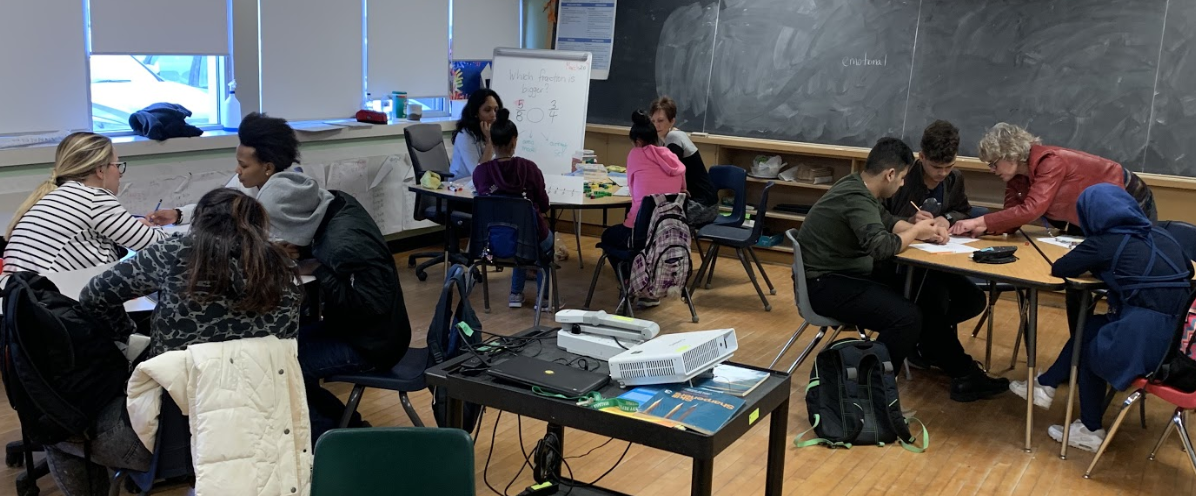
Our instruction model was only half of our concern, however. Our MAT1LZ course content was simply too advanced for our students. My son, in grade 3 at the time, brought his math homework home one evening. I realized that many of my students at the time would not have been able to do this primary-level math. And if that was the case, they would have no chance of applying concepts such as money, proportions and geometry to their environments - which really is my goal as a math educator. Yes, the elementary math curriculum is where we needed to begin. And so the back-mapping of our 1L curriculum to the early elementary curriculum began.
With the plans for a big shift in our ELD math program, we recognized quickly that a school team approach would be best. Teachers, guidance counsellors, administrators and board consultants all played a role in carving out the logistics of this program. We considered things like fluid student timetabling to allow students to be moved mid-year between our levelled 1LZ and 2LZ classes. We also planned for the students to take math for the full year, rather than only one semester, to maximize their progress. This also required timetabling consideration. In line with scheduling, teachers of ELD math had to have suitable classrooms, with round tables, conducive to small-group learning. These classrooms would need an inventory of supplies and manipulatives, allowing students to discover math concepts and to illustrate their understanding in a concrete way. And finally, it was important to give thought to the human resources to be devoted to this program. Educational assistants and peer tutors have now been scheduled into our ELD math classrooms, to assist in the work we do within our learning groups.
Over the past two years, we have implemented small group guided instruction in several of our secondary ELD math classes.
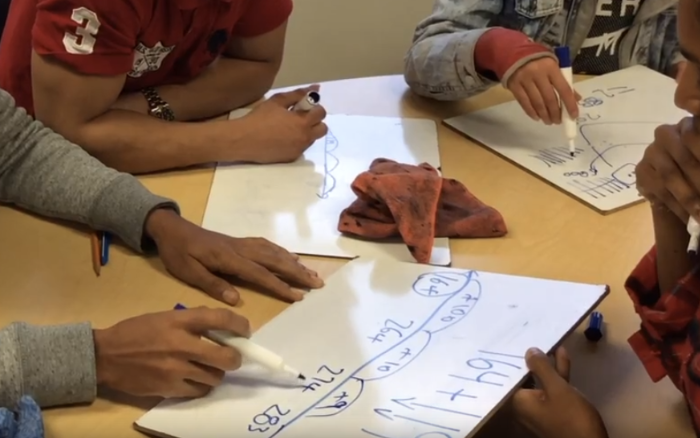
The success of this targeted model of instruction is evident in the students’ engagement with the math, their visual representations of the strategies they use, and their willingness and ability to explain their thinking. Small group guided instruction also allows the teacher to more accurately assess their students’ understanding of the math concepts.
(Sky, during an interview with Michelle in June 2019)
Small group guided instruction allows you, as the classroom teacher, to engage your students with the mathematics, track their individual progress, provide authentic and timely assessment, and plan for “just right next steps” to meet each of your students’ learning needs.
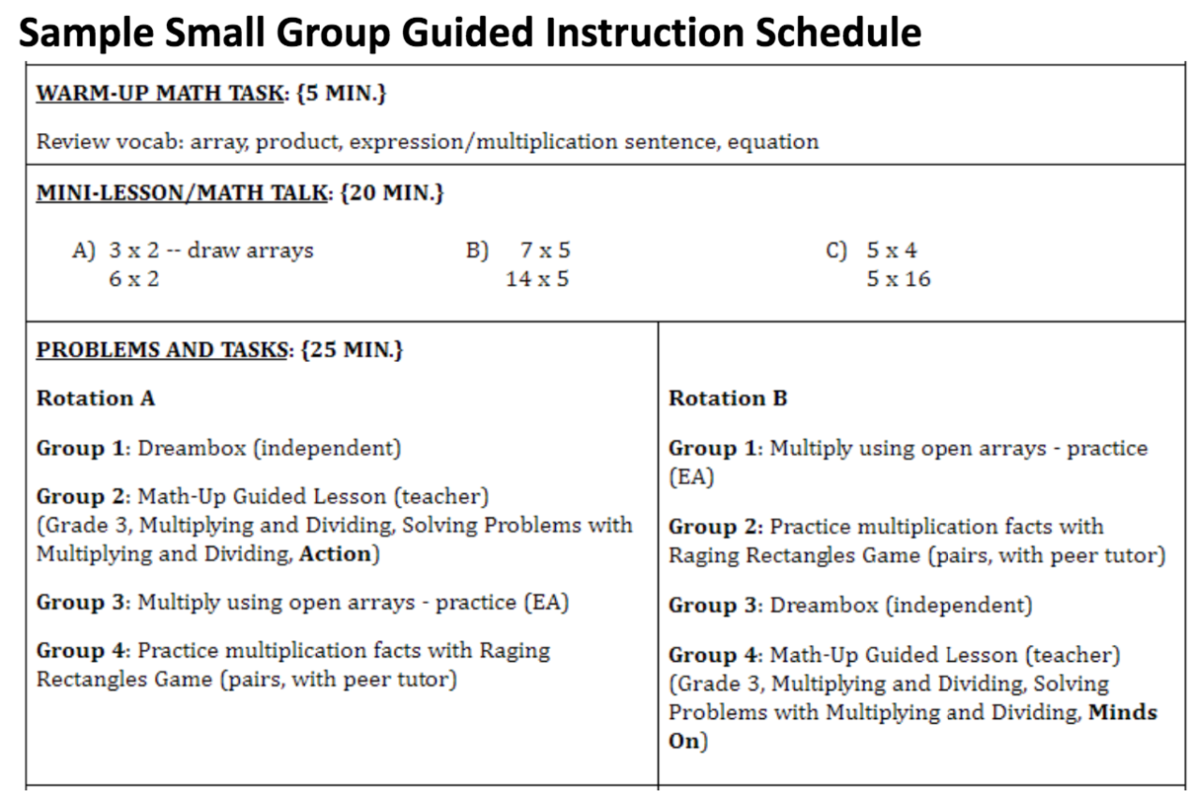
Although we are continuing, every day, to learn more about the students we serve in our ELD math courses, what we have learned so far emphasizes for us the value of small group guided instruction for reaching and effectively teaching some of our most vulnerable learners. We have seen that through targeted, small group guided instruction, our students are engaging more deeply with the mathematics, representing their mathematical thinking using a variety of tools and strategies, and gaining competence and confidence in their understanding of mathematics. It is incumbent upon us, then, to embrace this method of teaching within all of our ELD math classes.
The students in our ELD math programs are motivated to learn and aspire to contribute to their communities. Indeed, the Ontario Ministry of Education policy document for ESL and ELD programs mandates that, “In secondary schools, placement in a grade or in specific subjects will depend upon the student’s prior education, background in specific subject areas, and aspirations (p. 21, emphasis added).”
Deborah, a student in Sky’s 2018-2019 MAT1LZ class
Abdallah, a student in Sky’s 2018-2019 MAT1LZ class
Emel, a student in Sky’s 2018-2019 MAT1LZ class
Let us respond to these students by teaching them mathematics in the ways that we know will best meet their needs as learners and as young people who want to make a difference.
End Notes:
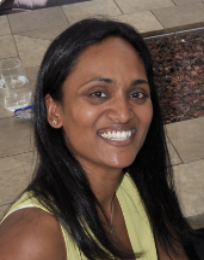
Sky Cressman is a secondary school mathematics teacher with the Waterloo Region District School Board. She has taught high school math since 2005, recently adding ELD math to her professional portfolio. She believes that
everyone is capable of learning math and pursuing higher level studies in the
subject area, if they are met with a program that is appropriate in both
curriculum content and instruction. Her personal goal is to have each of her
students recognize that when these conditions are coupled with hard work and determination, there is no limit to what they can achieve.
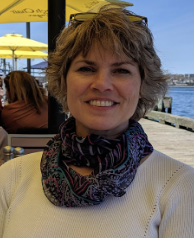
As a Learning Support Services Consultant with over 25 years of experience in the teaching and learning of mathematics, Michelle Lang advocates for and supports both teachers and students in ELD math programs within the Waterloo Region District School Board. She is passionate about ensuring that all students have equitable access to math content and instruction that meets not only their current learning needs, but also their goals for the future.
